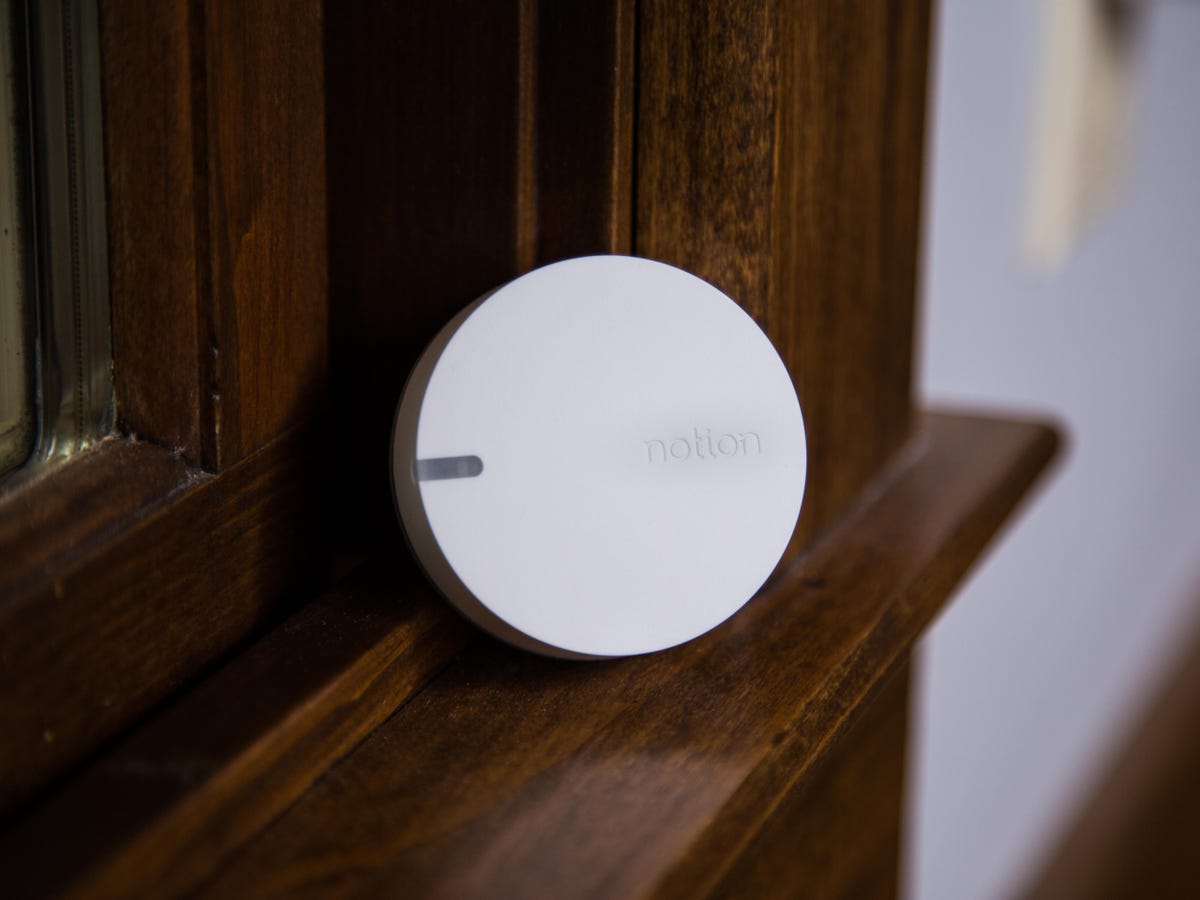See your smart home's stats with Notion sensors and Nest
The second generation of Notion smart home sensors works with Nest for data like individual room and average temperatures.

Notion's second-gen sensor
The second-generation Notion sensor is larger than its predecessor, but has the same shape and exterior design.
New battery power
The new sensors are larger, mostly due to the change in battery power. The original sensors were powered by a small coin cell battery, now replaced by two lithium-ion AAA batteries.
Notion bridge
Notion sensors connect to your existing Wi-Fi through a Notion bridge. Each bridge can support up to 15 sensors.
Notion app
Notion's app includes a home screen where you can view each sensor and the tasks it is assigned, as well as its current status.
Notion monitors multiple senses
Notion sensors bill themselves as a great multitasking sensor. You can use one sensor to monitor multiple things, but there are restrictions to which senses go together.
Notion integration with Nest
Notion's second-gen sensors now integrate with Nest, but only if you have an iOS device. Inside the Notion iOS app, you can now view Nest thermostat readings and adjust the temperature.
Nest in the Notion app
inside the Notion app, a Nest thermostat page displays the current Nest temperature reading with a sliding bar to make adjustments. It also displays the home's average temperature based on Notion sensors set to monitor temperature.
Notion is pretty pricey
A three pack of sensors and one bridge costs $219. A single sensor is $49 and a single bridge will cost you $89. That's significantly more pricey than we've seen from other smart sensor systems such as SmartThings.
Door and window sensing
When a sensor is used to monitor opening or closing, you'll receive notifications each time an event occurs, as well as a log of prior events.

